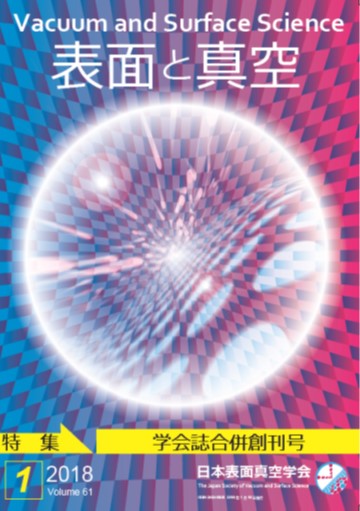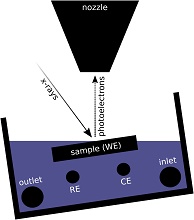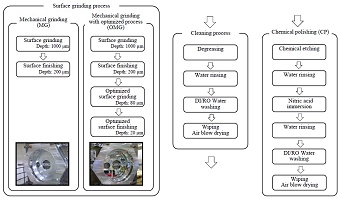Volume 65, Issue 3
Special Feature : Development and Applications of Instrumentation, Measurements, and Data-analysis in Surface Analysis
Displaying 1-14 of 14 articles from this issue
- |<
- <
- 1
- >
- >|
Preface
-
Article type: Preface
2022 Volume 65 Issue 3 Pages 99
Published: March 10, 2022
Released on J-STAGE: March 10, 2022
Download PDF (339K)
Special Feature : Development and Applications of Instrumentation, Measurements, and Data-analysis in Surface Analysis
-
Article type: Introduction
2022 Volume 65 Issue 3 Pages 100-101
Published: March 10, 2022
Released on J-STAGE: March 10, 2022
Download PDF (306K) -
Article type: Overview
2022 Volume 65 Issue 3 Pages 102-108
Published: March 10, 2022
Released on J-STAGE: March 10, 2022
Download PDF (2102K) -
Article type: Current Topics
2022 Volume 65 Issue 3 Pages 109-114
Published: March 10, 2022
Released on J-STAGE: March 10, 2022
Download PDF (1891K) -
Article type: Current Topics
2022 Volume 65 Issue 3 Pages 115-120
Published: March 10, 2022
Released on J-STAGE: March 10, 2022
Download PDF (4420K) -
 Article type: Current Topics
Article type: Current Topics
2022 Volume 65 Issue 3 Pages 121-127
Published: March 10, 2022
Released on J-STAGE: March 10, 2022
-
Article type: Current Topics
2022 Volume 65 Issue 3 Pages 128-132
Published: March 10, 2022
Released on J-STAGE: March 10, 2022
Download PDF (2436K) -
Article type: Technical Topic
2022 Volume 65 Issue 3 Pages 133-138
Published: March 10, 2022
Released on J-STAGE: March 10, 2022
Download PDF (1160K)
Regular article
-
Article type: Regular article
2022 Volume 65 Issue 3 Pages 139-144
Published: March 10, 2022
Released on J-STAGE: March 10, 2022
Download PDF (4959K) -
Article type: Regular article
2022 Volume 65 Issue 3 Pages 145-150
Published: March 10, 2022
Released on J-STAGE: March 10, 2022
Download PDF (1222K)
Report
Conference Report
-
Article type: Report
2022 Volume 65 Issue 3 Pages 151-153
Published: March 10, 2022
Released on J-STAGE: March 10, 2022
Download PDF (1087K)
Science Café
Research Abroad
-
Article type: Science Café
2022 Volume 65 Issue 3 Pages 154-155
Published: March 10, 2022
Released on J-STAGE: March 10, 2022
Download PDF (668K)
News & Trends
-
Article type: News & Trends
2022 Volume 65 Issue 3 Pages 156
Published: March 10, 2022
Released on J-STAGE: March 10, 2022
Download PDF (312K)
-
Article type: Bookstand
2022 Volume 65 Issue 3 Pages 157
Published: March 10, 2022
Released on J-STAGE: March 10, 2022
Download PDF (234K)
- |<
- <
- 1
- >
- >|








